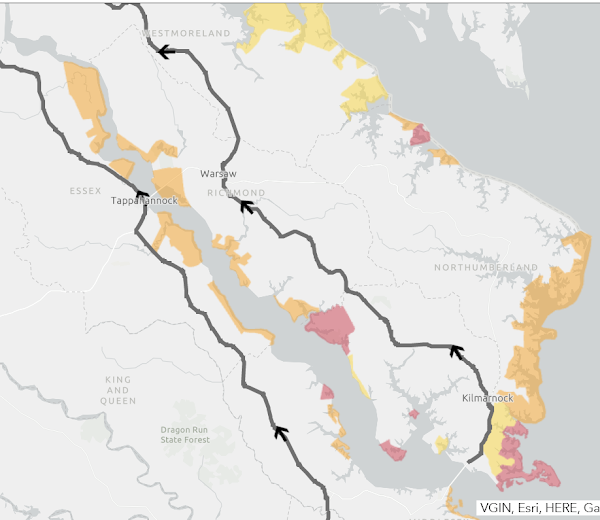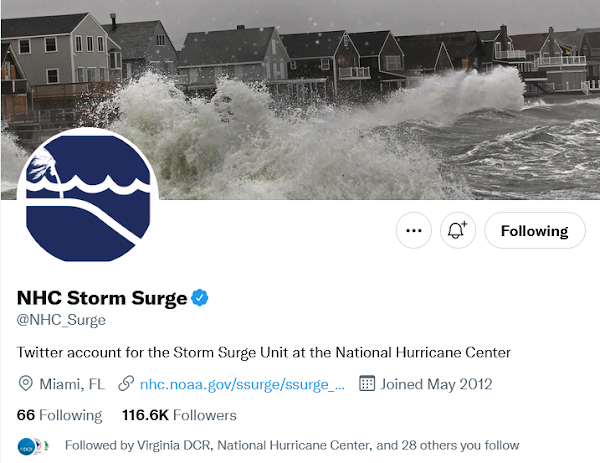"Know Your Zone" is the state's hurricane evacuation schema and system. Know Your Zone maps coastal Virginia, identifies the addresses most in need of evacuation, and identifies evacuation routes. According to the website, Know Your Zone "serves roughly 1.25 million residents who live in Coastal Virginia, the region of the state most vulnerable to hurricanes and other tropical storms. Twenty-three localities participate in the tiered evacuation zones. Zones were developed in close coordination with local emergency managers throughout Hampton Roads, the Northern Neck, the Middle Peninsula and the Eastern Shore based on the most up-to-date engineering data for the region.
"Zones are designated A through D. Zones provide residents with clarity on whether they should evacuate in an emergency or shelter at home, based on their physical street address and the nature of the emergency event. When a serious storm is expected to threaten or impact Virginia’s coastal regions, state and local emergency agencies will work with local news media outlets, as well as social media channels, that will then broadcast and publish evacuation directives to the public."
Pronunciation of storm names (PDF): Bookmark this.
How to use the cone graphic: This video is a must-watch for those who live on the #NNK, especially those on or close to water.
National Hurricane Center's Facebook page, NOAA NWS National Hurricane Center, @NWSNHC: The "page provides updates about the NHC outreach and education campaign and other items that might be of interest to the public throughout the year. During the hurricane season, the site contains a daily tropical weather update for both the Atlantic and eastern North Pacific basins, as well as alerts regarding any tropical cyclone activity as needed. The NHC also conducts Facebook Live briefings during tropical cyclone events." (Update on National Hurricane Center Products and Services for 2022 (PDF))
Ida retired: The World Meteorological Society announced in April 2022 the retirement of Ida in the wake of devastation. Learn more in Hurricane Committee retires Ida, prepares for 2022 season.
National Hurricane Center on Twitter: The main account, @NWSNHC, is NHC's primary mechanism for engaging and conversing with the public. Topics include education and outreach. NHC sends automated tweets from @NHC_Atlantic when a tropical cyclone public advisory is issued. The center explains, "Each tweet contains a link to access the corresponding product on the NHC website. [The account] will also be used to supplement and augment the formal tropical cyclone product suite, with occasional notices on such topics as reconnaissance aircraft status, announcements on NHC’s intention to initiate advisories on a new tropical cyclone, highlights of key messages during active cyclones, etc." (Update on National Hurricane Center Products and Services for 2022 (PDF))
NHC Storm Surge, @NHC_Surge "enhances storm surge forecasts by providing real-time reports and observations during an event (resources permitting). The feed will enhance preparedness and outreach efforts throughout the year, and provide news and announcements on updates to the SLOSH modeling system and storm surge decision support tools." (Update on National Hurricane Center Products and Services for 2022 (PDF))


